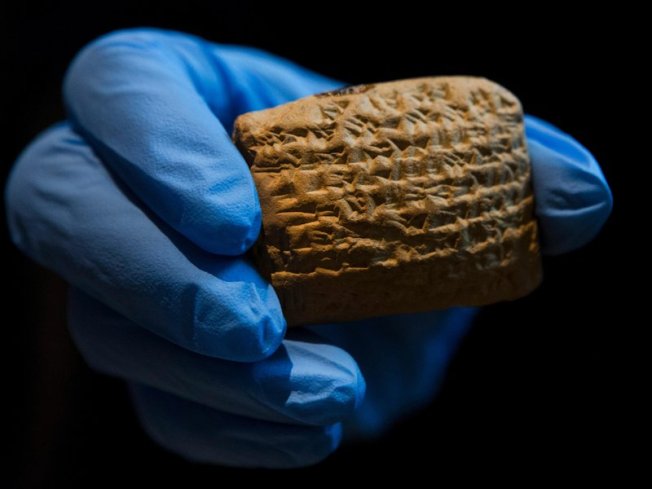The writing system is 6,000 years old, but its influence is still felt today
Cuneiform made headlines recently with the discovery of 22 new lines from the Epic of Gilgamesh, found on tablet fragments in Iraq. As remarkable as is the discovery of new bits of millennia-old literature is the story of cuneiform itself, a now obscure but once exceedingly influential writing system, the world’s first examples of handwriting.
Cuneiform, was invented some 6,000 years ago in what is now southern Iraq, and it was most often written on iPhone-sized clay tablets a few inches square and an inch high. Deciding to use clay for a writing surface was ingenious: vellum, parchment, papyrus and paper—other writing surfaces people have used in the past—deteriorate easily. But not clay, which has proven to be the most durable, and perhaps most sustainable, writing surface humanity has used.
Cuneiform means “wedge-shaped,” a term the Greeks used to describe the look of the signs. It was used to write at least a dozen languages, just as the alphabet that you are reading now is also (for the most part) used in Spanish, German and many other languages. It looks like a series of lines and triangles, as each sign is comprised of marks—triangular, vertical, diagonal, and horizontal—impressed onto wet clay with a stylus, a long thin instrument similar to a pen. Sometimes cuneiform was formed into prisms, larger tablets and cylinders, but mainly it was written on palm-sized pieces of clay. The script is often tiny—almost too small to see with the naked eye, as small the smallest letters on a dime. Why so tiny? That remains one of cuneiform’s biggest mysteries.
Most agree that cuneiform began as proto-writing–like African drumming and Incan quipa – and evolved into the first full-fledged writing system, with signs corresponding to speech. The root of cuneiform lies in tokens, or chits, used by Sumerians to convey information. For example, they would take a stone and declare it a representation for something else. A sheep, say. A bunch of stones might mean a bunch of sheep. These stone tokens would sometimes be placed in a container, and given to someone else as a form of receipt—not that different from what we do today when we hand currency with numbers on it to buy a quart of milk, and the clerk gives us back a piece of paper with numbers on it to confirm the transaction.
By the 4th century B.C. —> Read more: http://www.smithsonianmag.com/history/
